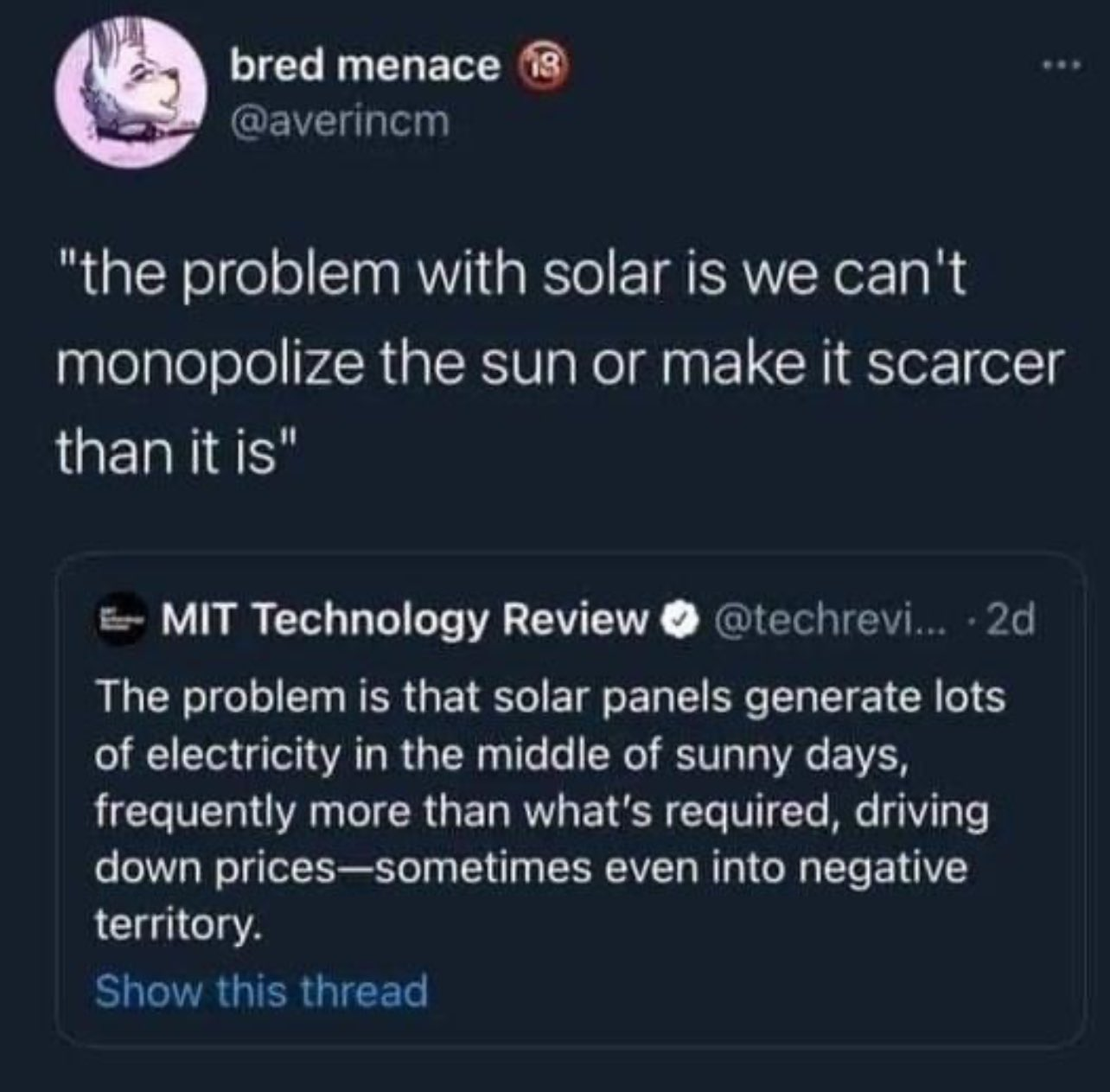this post was submitted on 02 Oct 2024
1683 points (95.6% liked)
Microblog Memes
5771 readers
1864 users here now
A place to share screenshots of Microblog posts, whether from Mastodon, tumblr, ~~Twitter~~ X, KBin, Threads or elsewhere.
Created as an evolution of White People Twitter and other tweet-capture subreddits.
Rules:
- Please put at least one word relevant to the post in the post title.
- Be nice.
- No advertising, brand promotion or guerilla marketing.
- Posters are encouraged to link to the toot or tweet etc in the description of posts.
Related communities:
founded 1 year ago
MODERATORS
you are viewing a single comment's thread
view the rest of the comments
view the rest of the comments

From a grid stability point, you can't produce more than is used, else you get higher frequencies and/or voltages until the automatics shut down. It's already a somewhat frequent occurence in germany for the grid operator to shut down big solar plants during peak hours because they produce way more power than they can dump (because of low demand or the infrastructure limiting transfer to somewhere else)
Negative prices are the grid operator encouraging more demand so it can balance out the increased production.
Well I wasn't expecting to find THE right answer in the comments already. Kudos!
And to everyone reading through this post: If you have questions, need more explanations or want to learn more about the options that we have to "stabilize" a renewable energy system and make it long term viable, just ask!
What options do we have to stabilize a renewable energy system and make it long term viable?
Well, I set myself up for this, didn't I... 😅 Actually I was kind of hoping for a more specific question, as I would need to respond with a wall of text - and I would like to avoid that as it is kinda rude to force people to read so much and it makes discussion difficult.
So maybe 3 options:
Lol yes you walked right into that one... Well let me try to meet you half way with some open-ended questions:
What does "stabilize" mean in this context, and are the challenges there different than the challenges with non-renewables like fossil fuels?
What are the biggest bottlenecks for stabilizing renewables, and how surmountable are they? For example, I've heard lots of talk about how large-scale battery networks(...?) are important to smooth out capacity for swingy energy sources like solar and wind (i.e. you gotta make sure the power doesn't go out at night!), but the materials for batteries (e.g. extractable lithium?) are scarce... Or similar concerns about photovoltaic cells. Is there any merit to those concerns? Or are the bottlenecks elsewhere? Or is there no bottleneck at all but Big Oil is conspiring to keep us on hydrocarbons?